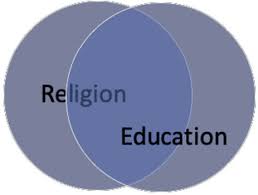
Chronology of Islamization of Education in Pakistan
By Arshad Yousafzai
Since the partition of united India, setting up an Islamic education system in Pakistan remained a challenge for authorities. A number of organizations, guidelines, action plans and policies were established but with little tangible outcomes so far in terms of practical skills and knowledge which are aligned with global and economic trends. This article focuses on the timeframe when the reforms in education have been marked by excessive experimentation with religion in education.
Is the motivation for Islamic Reconstruction based on historical fabrication?
A Karachi based Islamic research center, Majlis-e-Ilmi Foundation Pakistan, in its report in 2018 claimed that in 1947, the founder of Pakistan Muhammad Ali Jinnah had set up the Department of Islamic Reconstruction formulate Pakistan’s educational and the social system along with the constitution and economic system to be implemented in the newly established country.
However, there is a lack of evidence about the formation of such kind of department. And some the researchers are of the view that no such department was set up by the secular Jinnah. In the article titled ‘Secular Jinnah and the so-called Department of Islamic Reconstruction’ published in 2017, the author Yasser Latif Hamdani claims; “Before fake news there was Orya Maqbool Jan. These are the people who brought you Jinnah’s diary which was discovered in the 1980s by Zia’s government”
The Chronology of Reforms in Education
In 1949, Pakistan’s first Prime Minister Liaquat Ali Khan established Talimat-e-Islamia Board and took some prominent religious leaders on board. At that time, while enlisting directive principles of state policy, the religious scholars emphasized that teaching of Quran and Sunnah should be made compulsory at educational institutions. While it was also decided by the board that minorities would have the right to educate their kids according to their own beliefs.
In 1951, a national plan of educational development was implemented in the country after the recommendation of the first National Education Conference held in 1947. And first Five-Year Plan from 1955-60 was introduced. It was followed by second Five-Year Plan from 1960 to 65 and third from 1965 to 70. These plans were despite focused on the development of the educational system. By the time, education was not nationalized. However, the majority of the educational institutions were intended towards Islamic education.
In 1970, the cabinet adopted a new education policy. It was suggested that the role of education should promote Islamic values as an instrument of national unity and progress. At that time, eastern Pakistan had had a good literacy rate and a number of educational institutions were somehow producing competent graduates as compared to West Pakistan.
After the fall of Dhaka in 1971, Zulfikar Ali Bhutto implemented the nationalization policy of educational institutions. And access to free and compulsory education was declared as the state’s responsibility.
In 1973, the Constitution of Pakistan acknowledged in Part-II, Chapter 2, on principles of Policy. “The State shall remove illiteracy and provide free and compulsory secondary education within a minimum possible period.” Article 37 (b), Part II, Chapter 2, Constitution of Islamic Republic of Pakistan 1973. The said article was amended in 2010 under the 18th amendments by insertion of Article 25-“the state shall provide free and compulsory education to all children of the age of 5 to 16 years in such a manner as may be determined by law”.
In 1979, then dictator Zia ul Haq formed an educational committee headed by Dr Abdul Wahid Halepota to divert education according to Islam. This committee laid the foundation of the Islamization of education. Halepota had set a number of policies and guidelines to knead education in the Islamic template as per Zia’s wish.
In 1988, Zia ul Haq constituted a permanent Commission for Islamization of Education headed by Muhammad Raziuddin Siddiqu. The commission was tasked to encourage religious seminaries. However, Benazir Bhutto banned the commission in 1989.
In 1991, Mian Muhammad Nawaz Sharif formed a new commission headed by MNA Sajjad Haider for the Islamization of education. But that commission dissolved as Nawaz government ended in 1992.
In 1993, Benazir Bhutto constituted another commission headed by MNA Ghazanfar Gul for Islamization of education. In 1997, Nawaz Sharif again formed a new commission headed Dr Zafar Ishaq for the same purpose.
In 2001, then Dictator General Musharaf formed Pakistan Madrasah Board. In 2002, Musharaf also set up the Higher Education Commission that was porously known as University Grants Commission. And he also formed ITMP, Ithad.e.Tanzim-ul-Madaris in 2005. The ITMP is an alliance of five boards providing religious education to 4.59 million children. They are included Wafaq-ul-Madaris, Tanzeem-ul-Madaris Ahl-e-Sunnat, Rabita-ul-Madaris Al-Islamia, Wafaq-ul-Madaris Al-Salfia and Wafaq-ul-Madaris Al-Shia. These bodies run around 28,000 religious seminaries across Pakistan while more than 9,000 seminaries are operating by independent managing bodies. Apart from registered madaris, it has been estimated that around 10,000 religious madrassas are unregistered.
In 2010, the federal government and ITMP inked agreement for mainstreaming religious seminaries. In 2015, this registration of seminaries was included in the National Action Plan. And National Counter Terrorism Authority Pakistan has been trying to collect Madaris’ data.
In 2017, Paigham-i-Pakistan was introduced in those seminaries as government narrative about Islamization.
In 2019, PM Imran Khan announced to bring all religious seminaries under the federal minister for education. And also took control of seminaries that are being operated under Jama’at-ud-Da’wah.

The author is associated with The News and covers education related issues across Pakistan. He tweets at @arshadyousafzay and can be reached at arshadkhanyousafzay@gmail.com.



